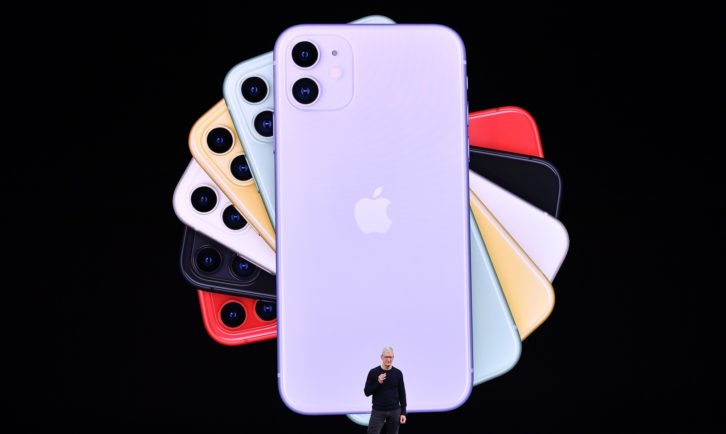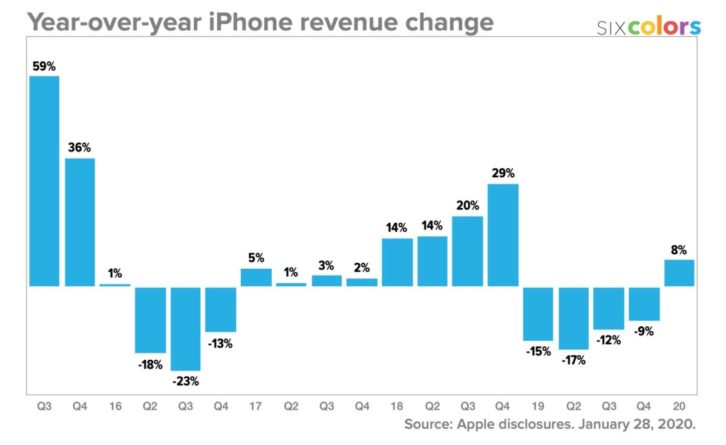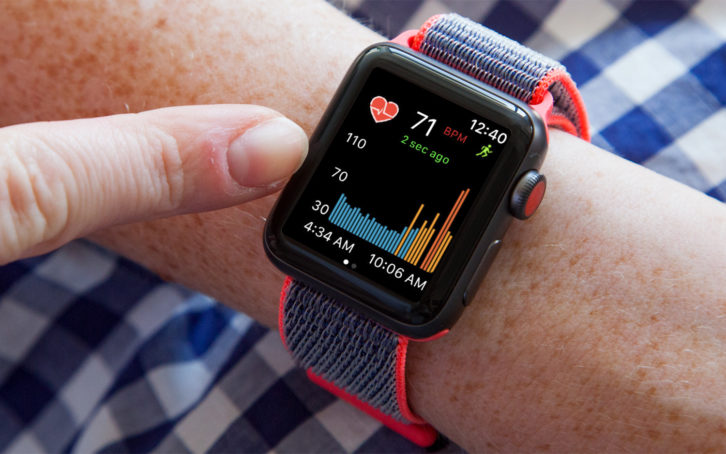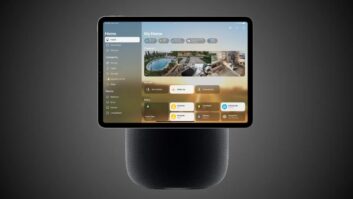
iPhone sales came roaring back for Apple during the holiday season. But it’s wearables like the Apple Watch and Air Pods and Apple’s growing array of services that are really driving the company forward in 2020.
Make no mistake — the iPhone remains a key part of Apple’s business, with revenue from the smartphone accounting for 61% of the record $91.8 billion in sales the company rung up for its fiscal first quarter ending Dec. 28. iPhone sales rose 8% during the holiday shopping season, with Apple selling nearly $56 billion worth of phones.
An iPhone 11-powered comeback
While an 8% gain may not sound like much, keep in mind where Apple was a year ago. That was the winter of iPhone shoppers’ discontent when phone sales fell 15% prompting a warning from Apple that business was below expectations.

There were no such warnings this year, with customers responding well to the September launch of the iPhone 11. Apple CEO Tim Cook said that the 6.1-inch iPhone 11 was the top-selling model every week during the quarter, but that the iPhone 11 Pro and iPhone 11 Pro Max were also among Apple’s top sellers. In other words, even with Apple offering lower-cost iPhone XR and iPhone 8, customers were snapping up the newer models.
“I think that mix [of iPhones] helped us in Q1 and it’s helping us with the guidance in Q2,” said Luca Maestri, Apple’s chief financial officer. “The customer reception for the iPhone 11 Pro and 11 Pro Max has been exceptional, and that clearly has helped our mix.”
Services and wearables: Where it’s at these days
While Apple is doubtlessly pleased by the iPhone’s return to growth, that’s not where the real action lies. Both the services and wearables segments of Apple’s business saw double-digit gains during the quarter — 17% for services and 37% for wearables. “A blowout quarter” is how Cook described that segment.
Services growth should be no surprise. It’s long been a stated a goal of Apple to double its 2016 services revenue by this year, and the company is well on track to do that. The just-completed quarter saw all-time record revenue from Apple Music and iCloud, while sales of Apple Care also hit a December quarter high.
The more significant story is in subscriptions, with Apple reaping the benefits of launching subscription news, gaming and streaming services throughout 2019. Paid subscriptions reached 418 million, a gain of 120 million from a year ago. Apple thinks it will with its current goal of 500 million paid subscribers during the March quarter, and it’s now aiming to hit 600 million by the end of the calendar year.
The numbers for wearables are even more eye-popping, with sales topping $10 billion for the first time. That gain came despite the fact that supplies of both the AirPods Pro and Apple Watch Series 3 were constrained during the quarter.

Speaking of the Apple Watch, it set an all-time record for revenue. Cook said that 75% of Apple Watch buyers during the holidays were new to Apple’s smartwatch. That may not sound as impressive, given how relatively new the smartwatch category is for Apple, but from the company’s perspective, it’s broadening the installed user base with customers who go on to use other Apple products and services.
“With each Apple product that a customer buys, they get tighter into the ecosystem,” Cook said. “They like the experience, and so from that point of view, I think each of our products can drive another product.”
Apple’s road ahead
The only downsides in Apple’s quarter were year-over-year drops in revenue from both the iPad (down 11%) and the Mac (down 3%). But Apple executives said the year-ago quarter presented difficult comparisons. In the same period for 2019, Apple had introduced a new iPad Pro as well as new MacBook Air and Mac Mini models.
Apple’s certainly bullish on its prospects for the next quarter, telling Wall Street analysts that it expects to revenue to range between $63 billion and $67 billion for the three months ending in March. For the same period last year, Apple tallied $58 billion in sales, so that’s a forecasted growth of 9% to 16%.
This article originally ran on tomsguide.com.













